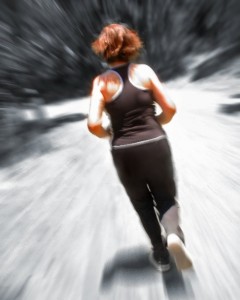To get the most out of reflexology as a partner to your fitness goals, balance must be considered. Sessions can be easily incorporated into your workout or running routine to enhance your physical well being and overall performance.
A reflexology session enhances circulation and can assist in preventing many cramps, spasms, aches and pains associated with extended exercise/running periods. Since the blood stream is responsible for supplying the muscle cells with nutrients and oxygen, while also removing toxins and waste products (generated by extended muscle exertion), increasing circulation is a key component! This is why most fitness coaches recommend alternating intense workouts with easier days of exercise in order to give waste products time to leave the body. Reflexology is a natural way to move these waste products out of the body and promote cell regeneration at an increased rate. It is a relaxing procedure that can be done in one’s down-time to speed up recovery. In considering reflexology’s attributes, I’d recommend the following approach be applied.
 Reflexology Sessions and Timing
Reflexology Sessions and Timing
Highly competitive: Reflexology is best two to three days before a competitive event (not the day of). Staying “psyched up” requires adrenaline and a certain amount of tension in the body.
Mildly competitive: Reflexology can help to unwind tensions towards the end of the work week and transition you into preparation for a Saturday or Sunday event by aiding in body awareness and focus.
Post physical workout/race: Reflexology can help you feel less heavy. It will increase your circulation, begin the process of replacing damaged tissue and remove lactic acid at a faster rate.
After any heavy day of exercise: Reflexology can help bring you back into balance when you feel stressed out mentally and physically.

Reflexology and Physical Injuries
Foot sensitivity and pain can be a real issue with extended running. Heel spurs, plantar fasciitis and other foot conditions can be addressed through reflexology. Soreness can be worked out with relaxation exercises and techniques prior to and during treatments. Muscle injuries can also occur from overstretching or tearing of muscle fibers. Tears in the muscle can even lead to scar tissue which is tighter and more fibrous. These areas have poor blood flow. Reflexology can help boost blood supply to damaged areas, taking away toxins and bringing with it oxygen, nutrients, minerals, enzymes and hormones. For example, the protective activity of anti-inflammatory and anti-oxidant adrenal hormones like cortisol helps to minimize reactions like swelling and inflammation. The cell environment, when properly supplied, can result in muscles that work at peak performance, getting you back on track faster.
 Nicole Costello, Certified Reflexologist
Nicole Costello, Certified Reflexologist
Centerline Reflexology
(778)433-3119
Email Nicole
See all articles by Nicole Costello



